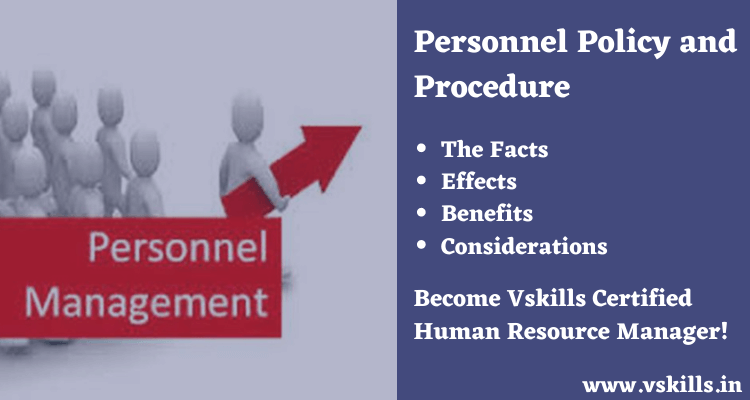HR Personnel Policy and Procedure – Every business should have written policies and procedures that document what is expected of employees and what they can expect from the business. Sometimes referred to as an employee manual, these documents provide clear guidelines regarding current laws, employee compensation, and how the company conducts business.
The Facts
An effective HR personnel policy and procedure manual should have written guidelines covering the following sections: responsibilities of each role in the business, employee benefits, sick leave, vacation, hours, pay periods, discipline, the promotion process, and how performance issues are handled. The manual should also address labor laws and how the business handles workplace harassment, discrimination, and substance abuse. A grievance policy should also be added so that employees and employers have an understanding of how issues are resolved.
Effects
By outlining the rules and beliefs of the business in a manual, everyone knows what is expected of them. This provides a basis for consistency in the workplace. As the National Restaurant Association points out in its employee manual creation guide, “The more you leave to your employees’ judgment, the less likely it is that they will do things the way you want them done.” A written policy and procedure guide, when followed, will improve an employee’s confidence in the company and overall morale in the workplace.
Benefits
The benefits of outlining personnel policies and procedures go beyond directly affecting the employees. As employee satisfaction increases, so does customer satisfaction. When all employees function under the same understandings, consistency in customer service is achieved. When a customer can expect a certain level of performance or quality of product from any employee at the business, it creates a positive impact on the company’s brand, reputation, and fiscal bottom line.
Considerations
In order to be effective, all policies and procedures outlined in the manual should be followed. Lack of adherence will have a negative effect on employee satisfaction and can lead to legal consequences. Likewise, the grievance procedure should be followed step by step in order to protect the interests of all employees involved. If the policies and procedures need to be updated during employment, make sure that all employees are given a copy and that they sign an acknowledgment form. Finally, make sure that any changes you wish to make to the personnel policies and procedures are reviewed by a lawyer. In some instances, policies and procedures can be considered implied contracts and may affect a company’s ability to terminate an employee.
HR personnel policy and procedure typically covers a broad range of topics related to the management of employees in an organization. Some of the key areas that are covered in HR personnel policy and procedure include:
- Recruitment and selection: Guidelines for hiring new employees, including job posting, interviewing, and selection procedures.
- Compensation and benefits: Policies related to employee pay and benefits, including salary scales, bonuses, health insurance, retirement plans, and paid time off.
- Performance management: Procedures for assessing employee performance, providing feedback, and addressing performance issues.
- Employee conduct and discipline: Policies that outline expected standards of behavior and consequences for violating company policies, including disciplinary action and termination.
- Employee training and development: Guidelines for providing training and development opportunities to employees to enhance their skills and knowledge.
- Workplace safety: Policies and procedures related to maintaining a safe working environment and minimizing the risk of workplace accidents or injuries.
- Employee privacy: Guidelines for safeguarding employee personal information and ensuring compliance with privacy laws and regulations.
- Diversity and inclusion: Policies and procedures for promoting diversity and inclusion in the workplace and preventing discrimination based on race, gender, religion, or other protected characteristics.
- Grievance handling: Procedures for addressing employee grievances and complaints in a fair and timely manner.
- Termination of employment: Policies and procedures for managing the termination of employees, including notice periods, severance pay, and exit interviews.
Overall, HR personnel policy and procedure aims to create a consistent and fair framework for managing employees in an organization, while also ensuring compliance with legal and regulatory requirements.
Practice Questions
Q1. What is the purpose of an employee handbook?
A) To outline the company’s mission statement
B) To provide guidelines for acceptable behavior in the workplace
C) To explain the benefits and compensation package
D) All of the above
Correct Answer: B) To provide guidelines for acceptable behavior in the workplace
Q2. What is the purpose of an HR audit?
A) To ensure compliance with legal requirements
B) To evaluate employee performance
C) To determine employee benefits
D) To evaluate the effectiveness of company policies
Correct Answer: A) To ensure compliance with legal requirements
Q3. What is the main goal of a performance review?
A) To determine an employee’s eligibility for a promotion
B) To evaluate an employee’s job performance
C) To determine an employee’s salary
D) To evaluate an employee’s potential to be terminated
Correct Answer: B) To evaluate an employee’s job performance
Q4. What is the purpose of a job analysis?
A) To determine the salary of an employee
B) To determine the qualifications necessary for a specific job
C) To determine the benefits an employee is eligible for
D) To determine the employee’s potential for promotion
Correct Answer: B) To determine the qualifications necessary for a specific job
Q5. What is the purpose of a job description?
A) To evaluate an employee’s job performance
B) To determine an employee’s eligibility for a promotion
C) To provide an overview of the job’s responsibilities and requirements
D) To determine the employee’s potential for termination
Correct Answer: C) To provide an overview of the job’s responsibilities and requirements



